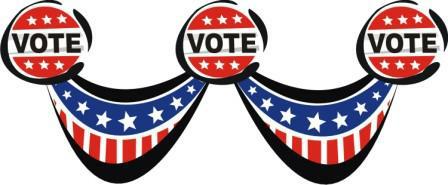Last Updated on January 30, 2020

It will come as no surprise to many that the 65+ year old crowd – aging baby boomers and older adults – are taking a lot of over-the counter (OTC) and prescription medicines, along with vitamins, dietary supplements and herbal remedies. As many as 55 million Americans will be older than age 65 by 2020.
With the population of older adults soaring in the coming years, the prevalence of patients with chronic disease – who often take numerous prescription medications daily – is likely to increase as well. Add in those over 65 taking medicines for occasional or chronic pain — in sheer numbers, it’s pretty staggering, putting them at significantly higher risk for drug-drug and drug–alcohol interactions, adverse events, medication errors and falls.
One of the major risk factors for falls is medications and their adverse effects. According to CDC, falls are the number one cause of injury and deaths from injury among older Americans. One in four Americans aged 65+ falls each year. Every 11 seconds, an older adult is treated in the emergency room for a fall; every 19 minutes, an older adult dies from a fall. Falls are the leading cause of fatal injury and the most common cause of nonfatal trauma-related hospital admissions among older adults.
Consider:
- Older adults use more medications, including prescription, OTC, and supplements, than any other age group in the United States.
- Older adults often use multiple medications, increasing the risk of drug–drug interactions, mix-ups, and the potential for harmful adverse effects.
- Older adults tend to receive prescriptions from different health care providers. This can make it more difficult to track medications and identify drug–drug interactions, harmful doses, and unnecessary or ineffective medications.
- Chronic conditions such as diabetes, high blood pressure, arthritis, and cancer are more common in older adults and often require a more complex medication management regimen.
- Age-related changes, such as weight loss, decreased body fluid, and increased fatty tissue, can alter the way drugs are distributed and concentrated in the body.
Falls are Common & Costly
Falls threaten older adults’ safety, quality of life and independence, while generating enormous economic and personal costs. According to the National Council on Aging (NCOA), 1 in 4 Americans aged 65+ falls every year, making falls the leading cause of fatal and non-fatal injuries for older Americans:
- Every 11 seconds, an older adult is treated in the emergency room for a fall.
- Every 19 minutes, an older adult dies from a fall.
- In 2015, the total cost of fall injuries was $50 billion (75% paid by Medicare and Medicaid).
- This total cost may reach $67.7 billion by 2020.
- Even falls without injury can cause fear of falling, leading to physical decline, depression, and social isolation.
Think Before You Drink: Medications, and Alcohol Use
Drinking alcohol when you are taking some prescription medications is a health risk for many baby boomers (ages 51-69) and older adults. This practice can have far-reaching health effects.
Aging bodies don’t work well when some medications and alcohol are mixed — Even if you still feel at the top of your game, health-wise, aging can work against your health. The most obvious sign: Your body likely just doesn’t feel like it used to feel. Older bodies work more slowly to clear medications and alcohol, which can make older adults more sensitive to their effects. There is also less tolerance to alcohol than do younger adults. Memory problems, mood disorders, poor balance and coordination, and weakness are other age-related health challenges. Prescription medications can make these health issues worse, if the medications are misused, abused, and/or combined with alcohol.
These common prescription medications may display a label warning not to consume alcohol while taking them. Is your medication on this list?
- Antibiotics
- Anxiety or depression medication
- Arthritis medication
- Blood thinners
- Cold and allergy medication
- Diabetes medication
- Epilepsy/seizure medication
- Heart burn medication
- Heart medication
- High blood pressure medication
- High cholesterol medication
- Medication for enlarged prostate
- Pain relievers
- Sedatives or sleep aids
Communication is the Key: Avoiding Medication-Related Falls
Effective communication is a two-way street – messages sent which are clearly understood and actionable. If only it were that simple. Yet, there are some important questions consumers should ask their doctor and pharmacist whenever prescription medicines are being considered as a part of treatment regimen. Additionally, it is important for healthcare professionals to initiate a dialogue with older patients at risk for falls. The following tips and questions for older adults, caregivers and healthcare professionals can help trigger this important conversation.
Older Adults and Caregivers
When you have questions about your medications and alcohol use, consider your local pharmacist and your physician or other prescriber your “go-to” sources of information [http://bemedwise.org/medication-safety/elderly-care]. Remember these 5 tips to help your health care professional help you safely manage your prescription medications:
- Tell your health care professional about all the medications you take—prescription, over-the-counter, vitamins, and herbal supplements.
- Read and follow all instructions on your medication’s label.
- Follow instructions provided by your health care professional about your medication.
- Report any side effects from your medication to your health care professional.
- Don’t stop taking your medication unless your health care professional says to stop.
Pharmacists, Physicians and other Prescribers
Effective communication is a two-way dialogue. If you are a health care professional looking to help raise your patient’s awareness about the potential for harmful interactions between prescription medication and alcohol use, start with a discussion. Use these tips:
- Review the NIAAA recommended drinking guidelines with your patients.
- Remind your older adult patients about the potential for increased sensitivity to medication and decreased tolerance for alcohol.
- Explain that medication can linger in the body for hours and that alcohol can still interact with prescriptions long after taking them.
- Discuss the importance of reading and understanding medication label instructions and warnings.
Here are suggested questions to get a conversation started with your older patients:
- Do you know how to read the labels on your prescription medications?
- Do you have questions about how to take your prescription medications?
- Do you drink alcohol? How much? How often?
- Can you stop drinking alcohol when you use this prescription medication?
- Do you understand the potential risks of drinking alcohol when you take your prescription medication?
(With permission from the American Pharmacists Association, this blog was adapted from Help older adults manage their meds with these resources and tips, Pharmacy Today, October 2017, and A time to focus on falls prevention,Pharmacy Today, February 2017.)





2 Comments
i am looking for rx for some one else, She has insurance but still needs help? Not listed on the needymeds??
Carolyn, please call our helpline at (800) 503-6897 and let’s see what programs we can find to help!